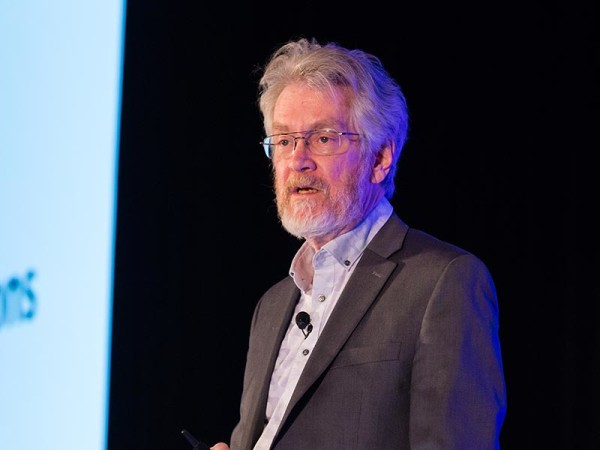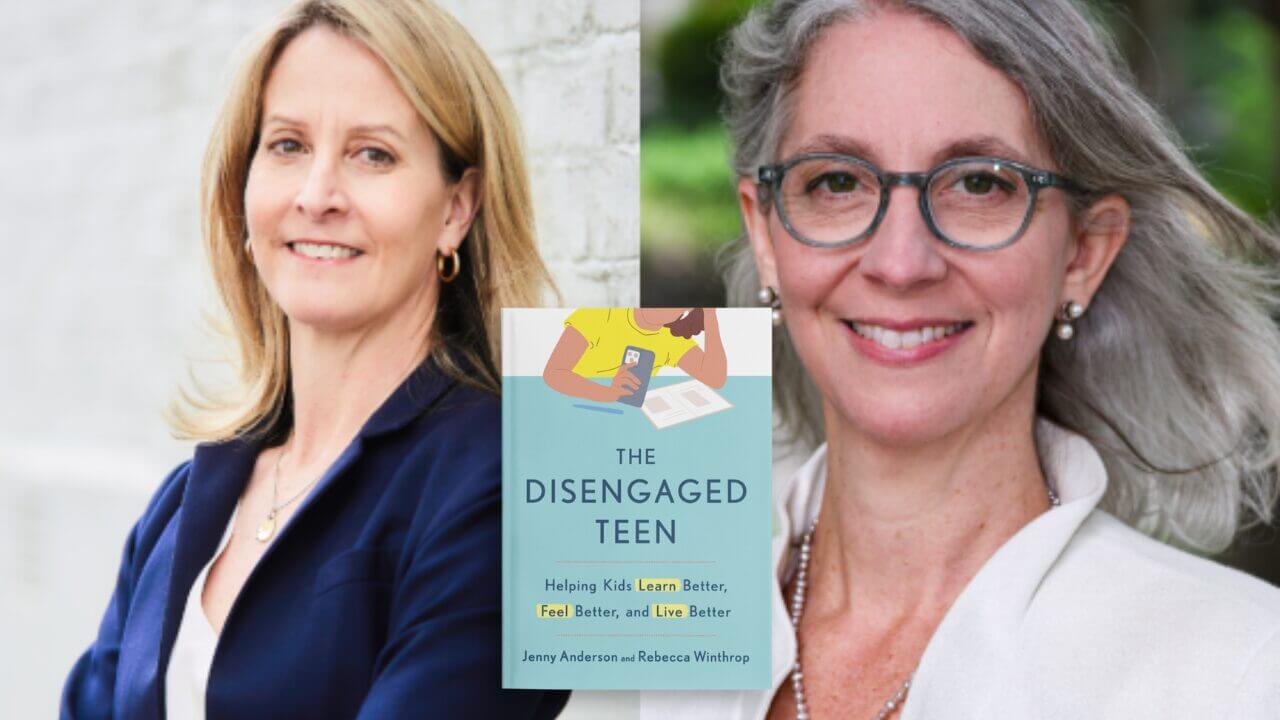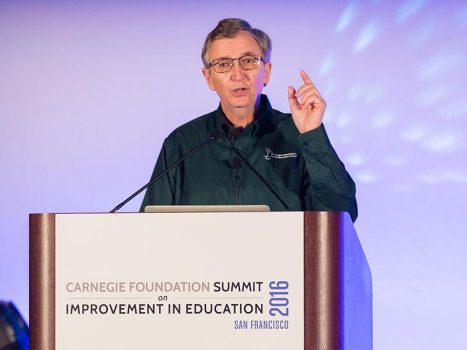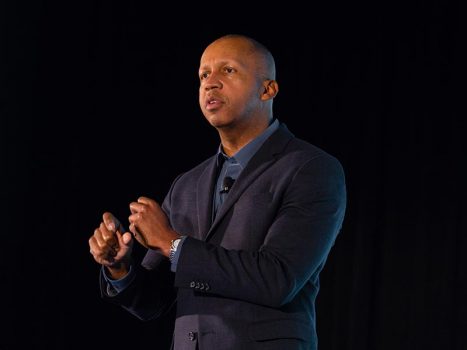Editors’ Note: This is the second blog post in our series featuring reflections on and learnings from the 2016 Carnegie Foundation Summit on Improvement in Education. Each post provides recaps of sessions you may have missed and further insight into presentations you may want to revisit.
Engaging in improvement science means participating in a disciplined learning process. By joining together in teams and in networked improvement communities, we aim to share our findings and ideas with others. But how can we ensure that our learnings are spread effectively, and, more importantly, are taken up by those who might benefit from our work?
The research of Alex “Sandy” Pentland may hold some answers. Though Pentland was recently declared by Forbes as one of the “seven most powerful data scientists in the world,” the insights he shared in his keynote address at the Carnegie Foundation Summit on Improvement in Education were more about people and relationships than about numbers and statistics. Pentland’s research shows that learning does not happen in isolation, but rather in the interplay between people and groups, ideas he elaborates upon in his recent book Social Physics: How Good Ideas Spread—The Lessons from a New Science.
Learning does not happen in isolation, but rather in the interplay between people and groups.
Social physics provides a way to better understand human behavior through the analysis of data. It is not a new idea, says Pentland; it actually dates back to the 1800s. The science’s resurgence today comes at a time when advanced statistics and the availability of “big data”—as well as the emergence of wearable technologies that can easily collect information about how and with whom individuals communicate— give us the ability to quantitatively analyze things we could previously only explore qualitatively through traditional social science. Pentland offered this analogy for the change happening now in the field: “Everybody knew that if you hold something up and let go, it falls. We’ve known that for millennia. But it wasn’t until you could write down equations for that [process] that you could begin doing things like building bridges. That’s the transformation that’s happening in social science.”
Pentland is using the science of social physics to understand the relationships between human behavior, collective experience, and the spread of ideas. Two of the studies he spoke about have particular relevance for people engaged in networked improvement communities (NICs).
Pentland’s research suggests we must also attend to balancing technical (and other) expertise with individuals’ engagement in and contributions to group problem-solving.

Effective groups
We probably all know a dysfunctional group when we see one (or worse, are a part of one), but it can be more difficult to pinpoint what makes for an effective team. In one study, Pentland put people in groups to complete tasks and solve problems together. He found that group members’ IQs, educational backgrounds, and personalities had little to no effect on the group’s ability to complete tasks.
On the other hand, group members’ engagement in the group had a large effect; groups performed better if everyone participated in and contributed to the group equally. Group members’ social intelligence also played a factor; being able to better read the others in the group translated to more acknowledgement of each other’s ideas and lots of shorter comments that were more iterative (building on each other’s ideas).
Though newly-formed NICs understandably focus on bringing together the right people (who have the expertise needed, the disposition required for improvement work, etc.), Pentland’s research suggests we must also attend to balancing technical (and other) expertise with individuals’ engagement in and contributions to group problem-solving.
Ensuring equal participation within groups can help improve group effectiveness, and encouraging informal interactions across groups can help jump-start innovation.
Foraging and innovation
However, we do not learn only in formal groups and settings. In any organization, there is an unofficial flow of ideas (through face-to-face conversations around the water cooler, for example) that has nothing to do with the group’s organizational chart or established routines. These informal interactions between individuals and teams—which Pentland described as “foraging” behaviors—provide valuable organization-wide context and prevent ideas from remaining siloed. It is from these interactions that innovation often comes.
In a study of groups of students participating in an entrepreneurship course to learn to create business plans, Pentland and colleagues recorded patterns of communication during a networking event held prior to the course. In some groups, there were “charismatic connectors” who engaged in a lot of foraging behavior; they would go from person to person and collect ideas. Then, they would pass on those ideas to others in the group. The groups that had experienced more connected networking events—where lots of ideas were spread by the charismatic connectors—ended up producing the best business plans by the end of the course.
We probably all know someone who is a charismatic connector—someone who is genuinely interested in people, who seems to naturally be able to relate what they talk about with one person to something they know about someone else’s work. Encouraging these foraging behaviors—as more and more companies are doing by investing in common spaces and other design features that support human interaction—can help get people out of their knowledge silos and generate cross-team innovation, making the group as a whole better.
Pentland’s research provides quantitative evidence for something we have always known to be true—that relationships matter to the success of an organization. As he said to the Summit audience, he is “trying to be the Jane Goodall of people”; he cannot see what is inside people’s heads, but he can observe and examine patterns of communication between individuals and groups. These patterns help us “predict whether organizations are productive or innovative.”
This is why we join together in NICs; we know that connections between individuals and groups facilitate learning, the sharing of learning, and the probability of arriving at the “aha” moments that lead to innovation. As our community of improvers forms, leads, and engages in NICs, we would do well to keep Pentland’s research in mind. Ensuring equal participation within groups can help improve group effectiveness, and encouraging informal interactions across groups can help jump-start innovation.
April 13, 2016
At the 2016 Carnegie Summit, Anthony S. Bryk gave a glimpse of what it looks like to struggle towards a common understanding of a problem and develop a working theory of improvement.
April 21, 2016
In his 2016 Carnegie Summit keynote, Bryan Stevenson reminded us of the power of getting "proximate" to suffering to deepen understanding. This blog post explores how this relates to the first core principle of improvement.







